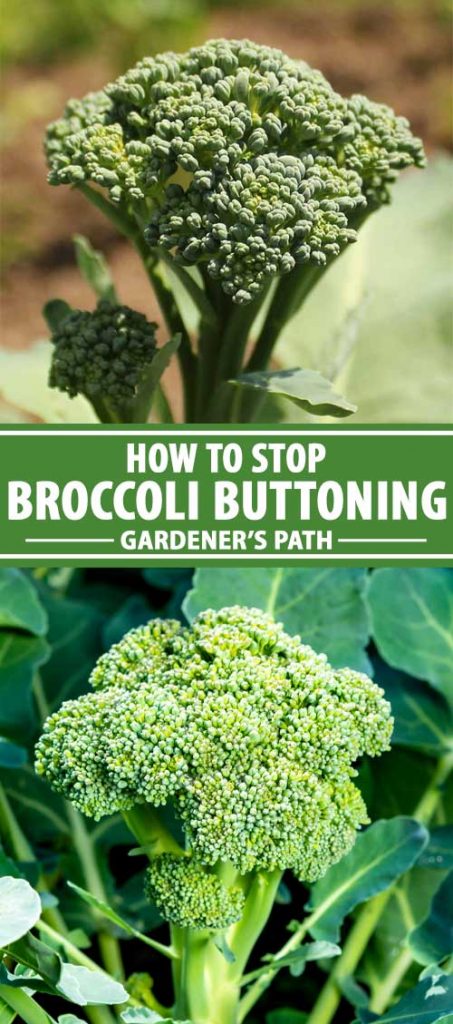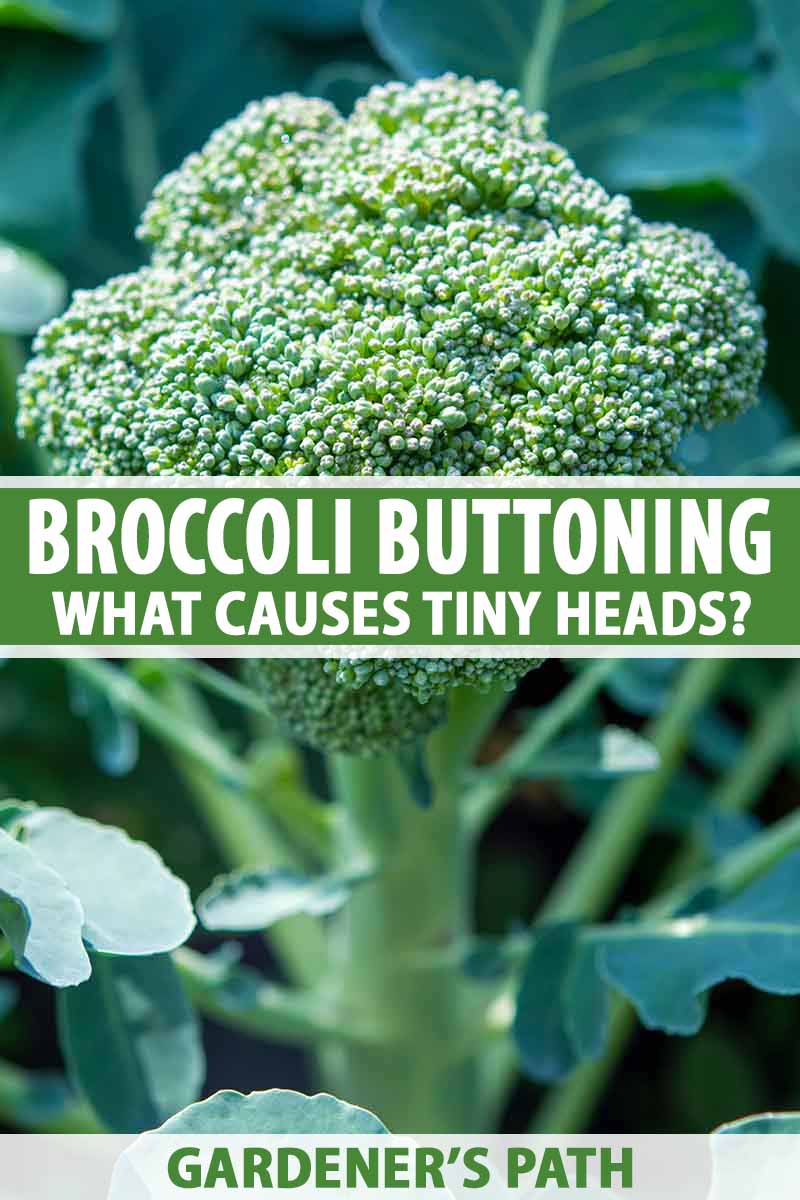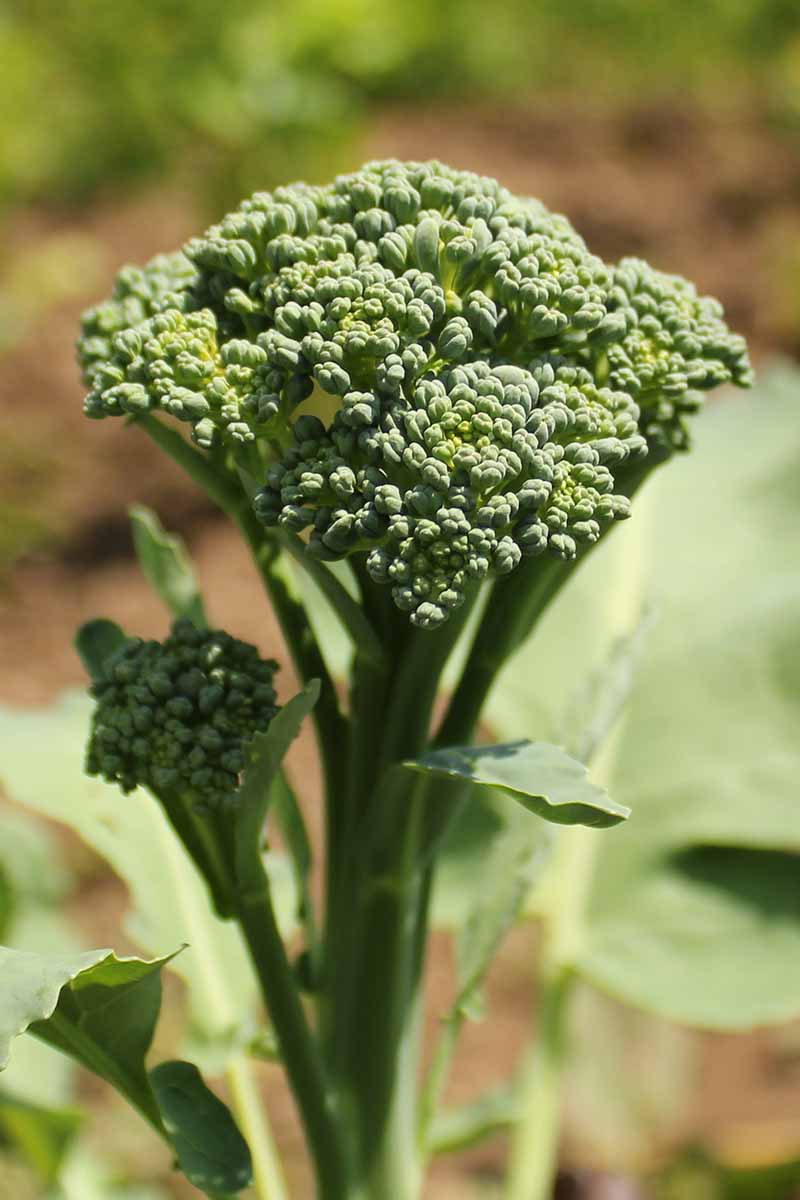In this article, we discuss why plants may produce heads that button, or form multiple tiny heads, as opposed to one large, compact one. Then we offer steps to take to avoid this outcome. We link to vendors to help you find relevant products. If you buy from one of our links, we may earn a commission. We’ll start with a summary of the requirements for cultivation. You can learn more in our full guide to growing broccoli.
Growing Essentials
In order to even hope for a praiseworthy crop of tight, green heads, you must cater to the requirements of this prima donna of the cruciferous vegetable world.
Plants enjoy a full-sun location, with neutral, organically-rich soil, which is well-draining and stays evenly moist. They don’t like being too close together, which can cause pest and disease problems – and you need to remember that they are cool-weather crops. There are three basic phases in broccoli development: If a young plant is stressed by environmental pressures, this can cause it to enter the reproductive stage prematurely. If this happens, it can grow small, button-like heads – and these will never mature into one large, tight head, resulting in the production of one or more of small “buttons.” instead. Let’s find out what can go wrong to cause heads to button.
The Likely Culprits
When you see that instead of forming solid heads, your plants are producing an abundance of individual florets, you’ll know that one or several of this plant’s growing requirements are not being met. The most likely reasons for buttoning are:
Excess nitrogen Lack of moisture Temperature extremes Poor planning
Plants that are already stressed by deficiencies in other areas have a greater chance of forming individual florets, rather than robust heads. Let’s discuss the likely causes.
1. Excess Nitrogen
Too much nitrogen in the soil may cause vegetative growth to continue long after reproductive growth should have taken over. The result may be abundant foliage with buttoned curds. It could also be loose full-size heads, or no heads at all.
2. Lack of Moisture
Broccoli needs consistent moisture from the time it’s sown until harvest, to transition smoothly from the vegetative stage, when foliage grows, to the reproductive stage, when head formation takes place. An irregular supply of water may stress plants, causing them to form small, individual florets with a bitter taste. In the worst case scenario, buttoned plants may bolt, first flowering, and then bolting and going to seed.
3. Temperature Extremes
Immature plants are easily stressed, particularly by extreme cold. And mature ones may react adversely when the barometer rises. The ideal temperature range for broccoli cultivation is above 40°F, and below 80°F. Fluctuations may lead to disruption of the growth cycle, causing vegetative growth to halt, and resulting in a premature jump to reproductive growth. Temperatures that fluctuate with spikes or dips may cause the formation of small, bitter buttons, or full-size “loose” heads with an unpleasant taste.
4. Poor Planning
When seed is planted too late in the spring, plants may be too stressed by the heat of summer to form good heads. Instead, they may produce small buttons, or large heads that are loosely joined. Similarly, if you sow seed that is not suited to the growing season in your USDA Hardiness Zone, you may find that plants struggle to form heads because the weather is either too cool or too warm.
Proactive Measures
Nitrogen is a volatile element that is difficult to measure in the soil. However, a soil test can determine if you should amend yours with compost, fertilizer, or both. If you fertilize, use a product that is well-balanced, slow-release, and does not contain an excess of nitrogen. Water deeply once a week, unless it rains an inch or more. Hold off during wet spells, and never let the plants completely dry out. If you have doubts about when to water, invest in a moisture meter and use it, the weather forecast, and common sense as your guides. Weed regularly to prevent moisture-hogging invasives from depriving broccoli of much-needed moisture. To inhibit the ill effects of temperature extremes, water plants well the day before a hot spell is expected. Use shade cloth to shelter plants from intense sunlight.
If a cold snap is in store, install floating row covers to provide protection, or use them during the entire growth cycle to minimize temperature fluctuations. Plan well by purchasing seed from quality purveyors that are suited to your growing zone. Consider starting seeds indoors to get them established before risking cold exposure. Acclimate seedlings gradually to the outdoors, and plant them after the last average frost date has passed. Choose early or late varieties with days to maturity that match your growing season. Plant accordingly, to avoid time periods that are typically too cool or warm for broccoli cultivation.
Getting It Together
We’ve talked about four possible reasons for buttoning, including too much nitrogen, not enough moisture, temperature fluctuations, and poor planning. We’ve also suggested ways to prevent these from adversely affecting broccoli head formation in your vegetable patch.
Do take the time to read your seed packets and understand the types you grow, as there are some – called sprouting varieties – for which individual florets are not an anomaly, but the norm. And visit our sister site, Foodal, for healthy and flavorful broccoli recipes. How does your garden grow? Feel free to share your successes and challenges with us and our community of readers in the comments section below. For more information about growing broccoli, one of our favorite delicious – but sometimes tricky – vegetables, you’ll need these guides next:
10 Best Broccoli Varieties for Your Garden (Plus 3 Delicious Bonus Options) How to Grow and Care for Romanesco Broccoli Why Does My Broccoli Have Loose, Bitter Heads? Why Won’t My Broccoli Form Heads?
© Ask the Experts, LLC. ALL RIGHTS RESERVED. See our TOS for more details. Originally published on March 6, 2020. [lastupdated]. Uncredited photos: Shutterstock.





